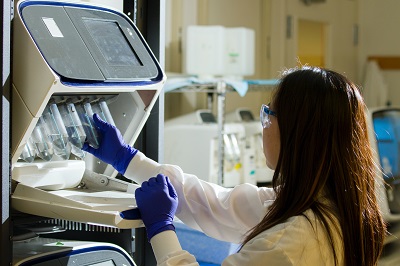Conducting clinical trials for NMPA registration of EEG machines in China involves a systematic approach to gather clinical data that demonstrates the device's safety, efficacy, and performance. Here’s a step-by-step guide on how to conduct clinical trials effectively:
1. Regulatory Preparation
Understand Device Classification: Determine the classification of your EEG machine according to Chinese medical device regulations (Class I, II, or III). Higher-risk classes typically require clinical trials.
Clinical Trial Planning: Develop a detailed Clinical Trial Plan (CTP) that outlines the study objectives, methodology, patient population, endpoints, and statistical analysis plan.
Ethical Approval: Obtain approval from ethics committees or institutional review boards (IRBs) for the clinical trial protocol and informed consent forms.
2. Clinical Trial Protocol Development
Study Design: Define the study design based on regulatory requirements and device characteristics. Common designs include:
- Randomized Controlled Trials (RCTs): Compare the EEG machine against a control group using random assignment.
- Non-Randomized Trials: Evaluate the device’s performance in a controlled observational setting.
- Single-Arm Trials: Assess the EEG machine’s effectiveness in a single group of patients.
Patient Selection Criteria: Establish clear inclusion and exclusion criteria for patient recruitment based on the intended use of the EEG machine and study objectives.
Endpoints: Define primary and secondary endpoints that measure safety, efficacy, and performance outcomes relevant to the EEG machine.
Sample Size Calculation: Conduct sample size calculation to ensure statistical power and adequacy of the study population based on anticipated effect sizes and variability.
3. Clinical Trial Execution
Site Selection and Monitoring: Identify clinical trial sites that meet regulatory and operational criteria. Monitor sites to ensure compliance with the protocol, good clinical practice (GCP) guidelines, and data integrity.
Patient Recruitment and Informed Consent: Recruit eligible patients and obtain informed consent following ethical and regulatory guidelines. Ensure patient confidentiality and rights protection.
Data Collection and Management: Collect clinical data systematically according to the protocol. Utilize electronic data capture (EDC) systems for data management to ensure data accuracy and completeness.
Safety Monitoring: Implement safety monitoring procedures to detect and report adverse events or device-related incidents promptly. Adhere to reporting requirements specified by NMPA.
4. Data Analysis and Reporting
Statistical Analysis: Conduct statistical analysis of collected data to evaluate safety and efficacy endpoints. Use appropriate statistical methods outlined in the protocol and statistical analysis plan.
Clinical Study Report (CSR): Prepare a comprehensive CSR that summarizes the clinical trial results, including study objectives, methodology, patient demographics, data analysis, and conclusions regarding the EEG machine's performance.
5. Regulatory Submission and Approval
Documentation Compilation: Compile all required documentation, including the clinical trial protocol, CSR, informed consent forms, ethics committee approvals, and regulatory submission forms.
Submission to NMPA: Submit the clinical trial data and documentation as part of the application for NMPA registration. Ensure compliance with all regulatory requirements and guidelines.
6. Post-Trial Responsibilities
Post-Market Surveillance: Implement post-market surveillance to monitor the safety and performance of the EEG machine after commercialization. Report any adverse events or incidents to NMPA as required.
Regulatory Compliance: Maintain compliance with ongoing regulatory requirements, including updates to clinical data and safety information.
Additional Considerations
Expert Consultation: Work with regulatory consultants or agents experienced in Chinese medical device regulations to ensure compliance and navigate the clinical trial process effectively.
Timeline and Resources: Plan for sufficient time and resources to conduct clinical trials, manage data, and prepare comprehensive documentation for regulatory submission.

Contact Us:
Whatsapp or Wechat:+86 15816864648;email address:hito.lin@grzan.cn
.png)
.jpg)
.png)

.png)